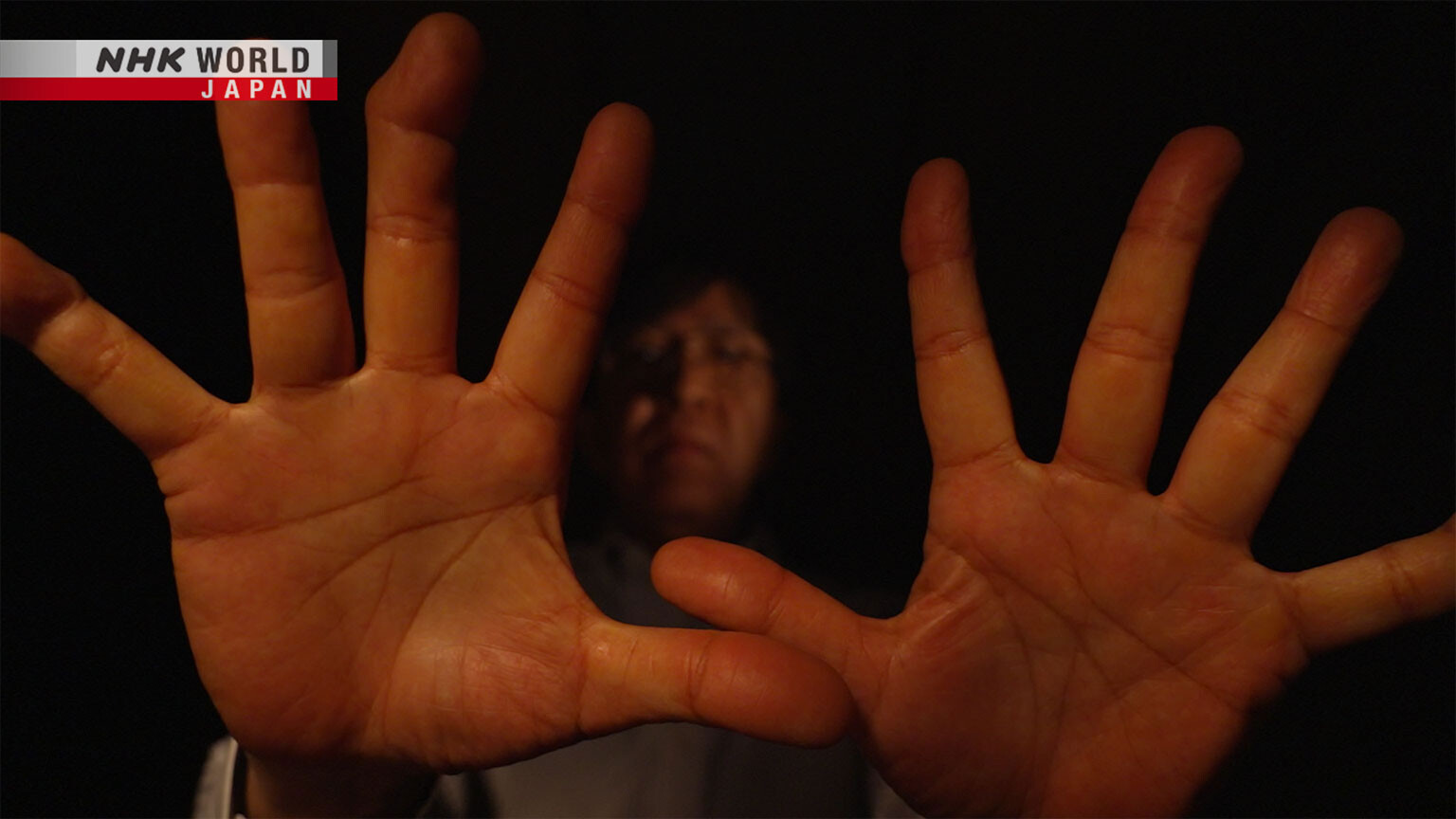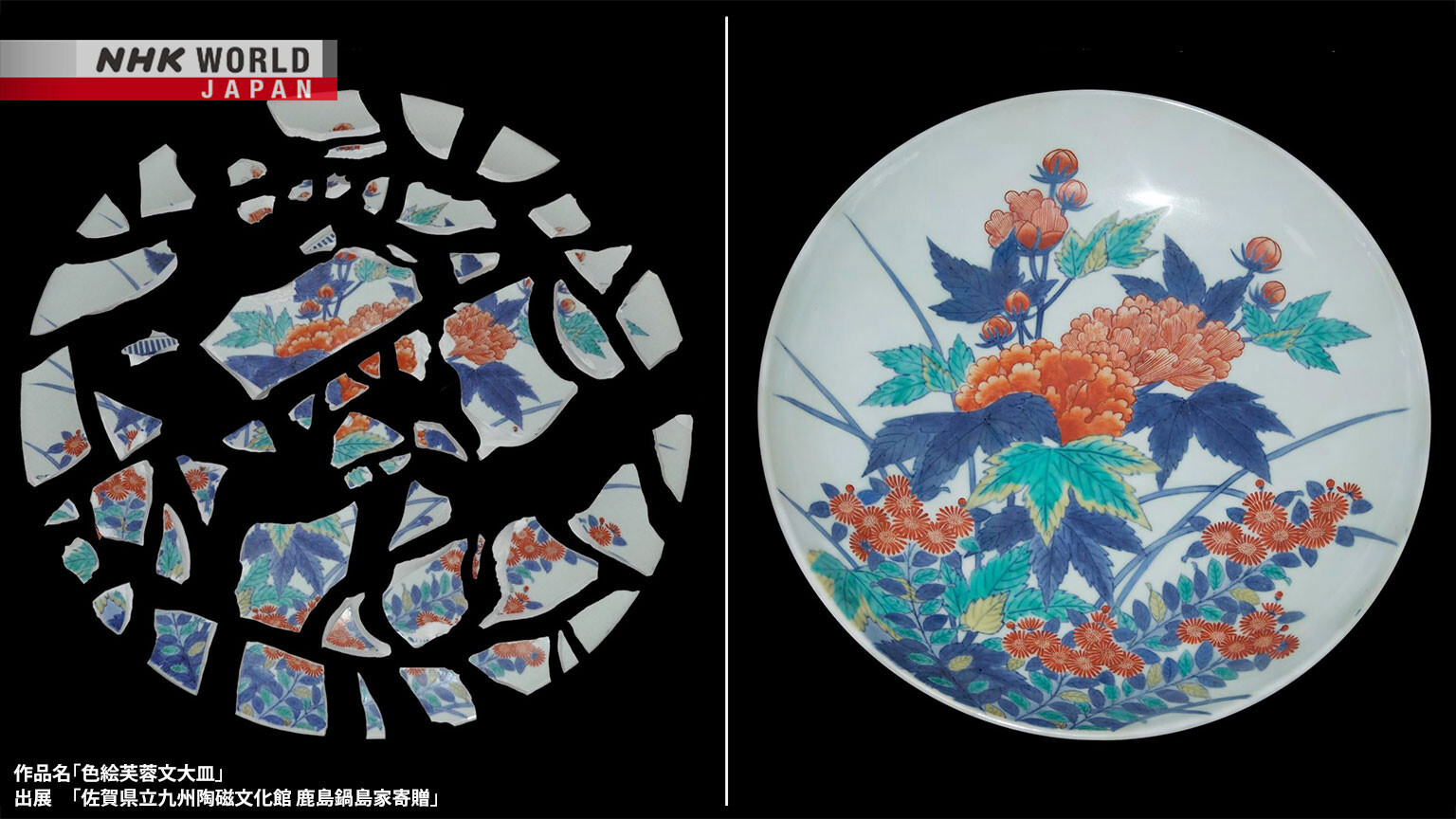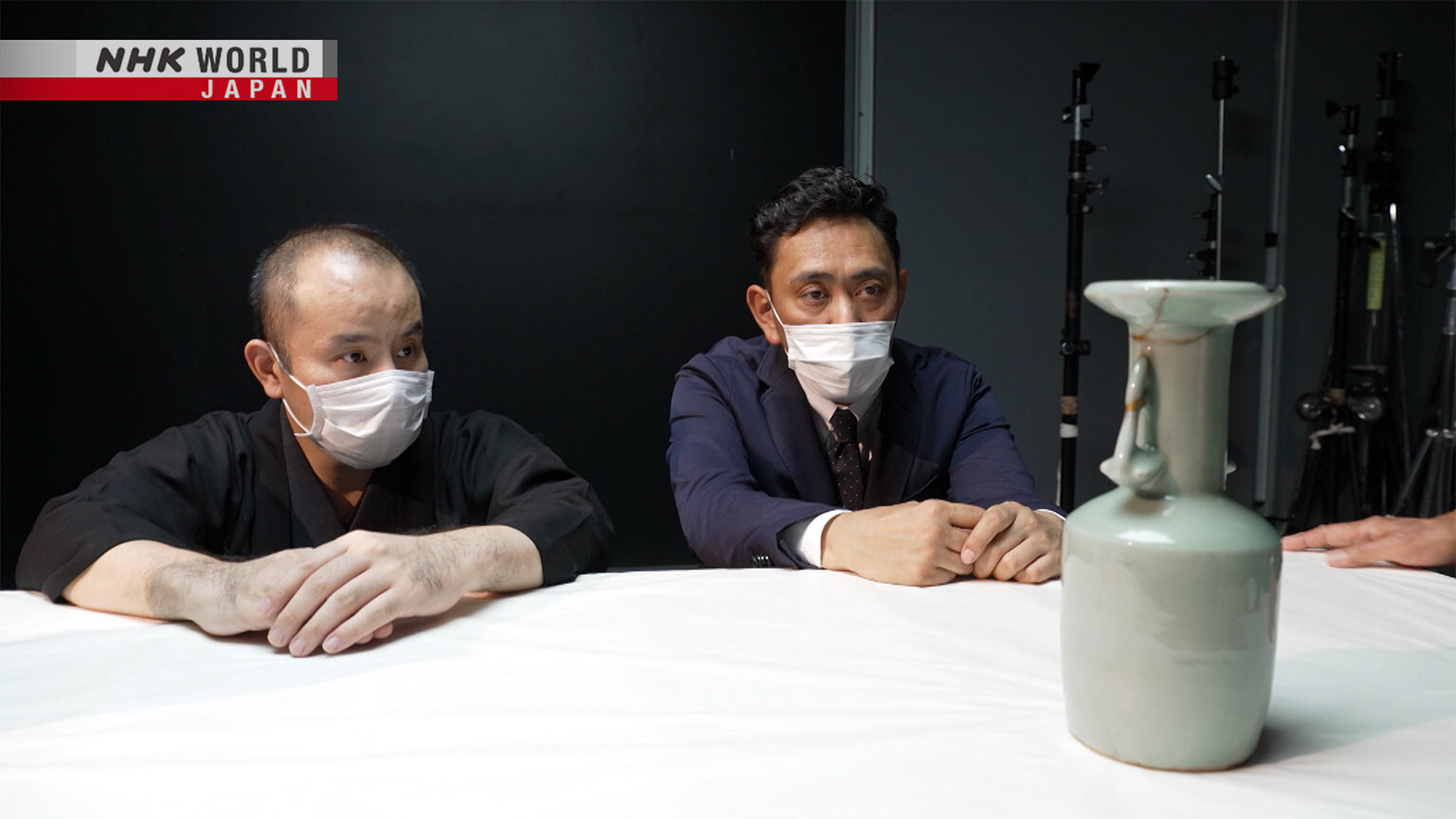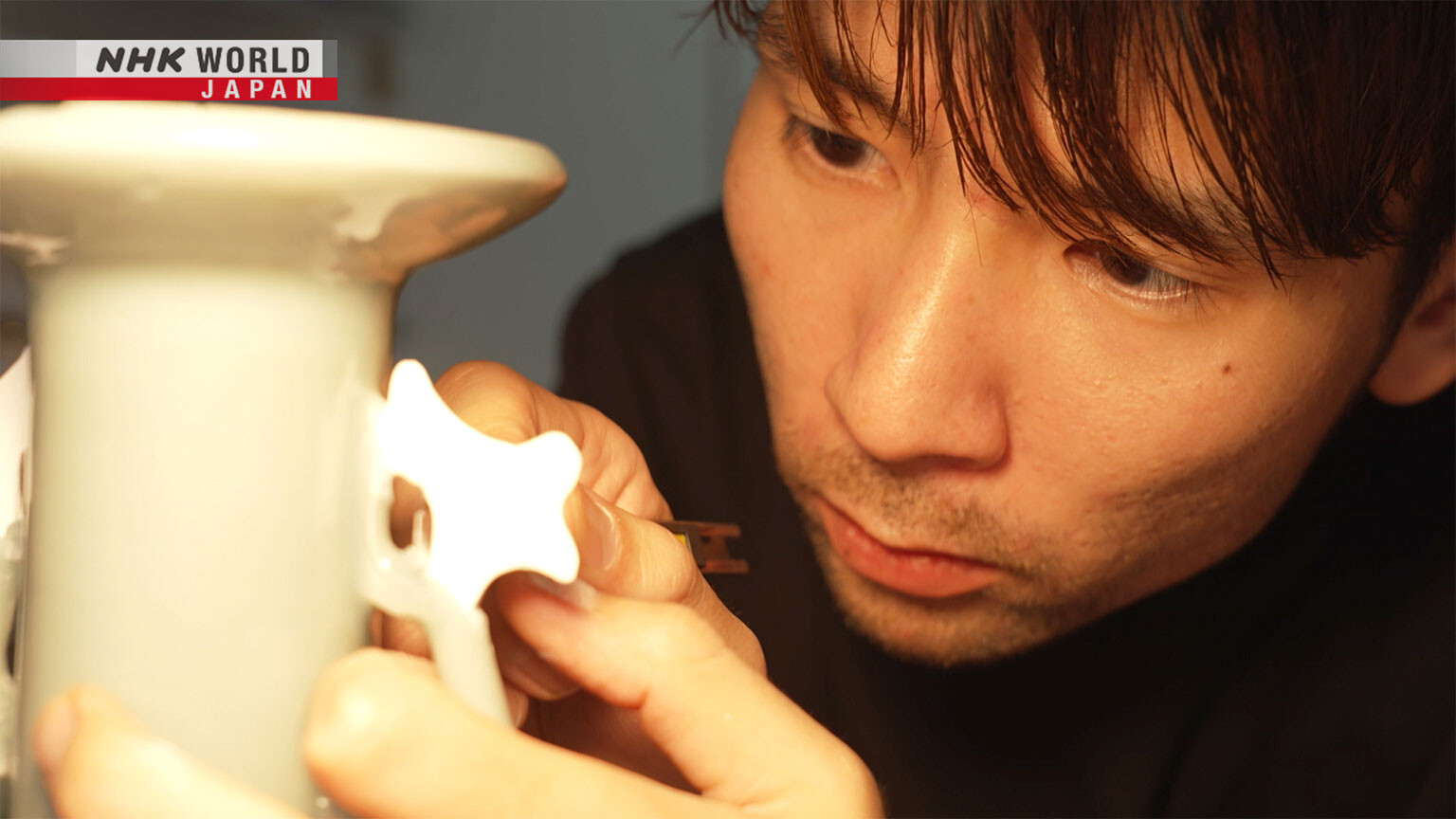The Unknown Master of Restoration
Mayuyama Koji is an art restorer who works with antique dealers and museums nationwide. His unique skills allow him to flawlessly restore broken works to their former conditions, earning him the nickname "God Hand." The practice originated from his father in the postwar period, when many antiques would be repaired secretly through underground means. This documentary reveals the details of his techniques, as well as his mission not just to restore art, but to preserve it for generations to come.




Transcript
There's a man who can supposedly fix any piece of pottery, no matter how broken it is.
A shattered bowl.
But in his hands...
Whole again.
Calling him good doesn't cut it.
He's on another level.
He uses his abilities as a top-class
ceramicist to restore pieces to their original beauty.
His materials and methods are all his own.
This is soil taken from Tang Dynasty pottery
that was buried for over a millennium.
Tea powder from about 70 years ago, give or take.
Have you turned down some jobs?
Someone asked me to fix up a
cadaver, but I wouldn't do it.
The work began underground, in the aftermath of World War II.
It was a shadowy era.
People who bought our services didn't
openly state that the item was repaired.
This is the first time he's allowed his techniques to be filmed.
They call him the God Hand.
His is a story that began in the shadows.
It's been a while.
Nara was a while ago.
No surprise the job's in Kyoto.
What they showed me was worth
$1.5 million USD.
Can't argue with that.
That's a lot of money.
Sometimes they're worth a few hundred thousand.
That's common.
They're the kind of thing that belongs in a museum.
Nice to meet you.
This is Fujita Kiyoshi, their client.
He runs the Fujita Art Museum, home to nine Japanese national treasures.
This is the advisor Sen So-oku, Successor to the Mushakojisenke school of Japanese tea ceremony.
Let's start with the flower vase.
The job concerns an artifact that had been slumbering in the museum storehouse.
It's incredible.
It's hard to display in this shape,
so it's barely come out of storage.
The color and texture are exquisite.
A shame about the damage.
This celadon flower vase was created around 800 years ago in China.
It says,
"Kyoto, Bishamon-do furnishing set" here.
Bishamon-do is where the renowned national treasure,
the Bansei is.
It must be of the same type.
It's up there with a national treasure.
Fixing the damage would be the best solution.
Undamaged, it would rub shoulders with a national treasure.
The box mentions a phoenix relief,
but the design is slightly different.
Yeah, there's no phoenix there.
Not something I've seen much elsewhere.
The phoenix is conspicuously missing from the vase.
They're tasked with one other work.
The pouch for this one is beautiful, too.
Wow.
It's a totoya chawan tea bowl.
If it wasn't cracked, it would be
one of the finest examples of its kind.
In the realm of Japanese tea ceremony, totoya chawan tea bowls are revered.
They were particularly beloved by Sen no Rikyu, who influenced Japanese tea ceremony more than any other person.
The name "Totoya" comes from that of a fish wholesaler originally run by the tea master.
Sen So-oku is a descendant of Sen no Rikyu himself.
So this is important. It says "damaged tea bowl."
That's part of the appeal.
It's been known as a broken tea bowl
for a very long time.
Fixing it would be nice, but its reputation
comes from its history as being broken.
I'm not sure fixing it to be absolutely
pristine is wise.
I think there's a balance to respect.
Time for another look at the piece.
The broken sections have been mended with gold - a process known as "kintsugi."
It's visual evidence that this piece has been passed down through the ages with care.
Let's see the other side.
The details also show traces of repair.
Now for the base.
The bottom was broken as well, its gaps filled in with lacquer.
It's covered in old wounds.
Back to the totoya chawan.
Its broken fragments have been coated over with lacquer.
The large golden kintsugi triangle leaps out.
Fixing this will prove particularly challenging.
First, the gold is scraped away.
I have a good sense of the overall condition,
so I'll have Yu take care of the rest.
Take the gold off, nothing special.
- Okay, I'll take it all off.
- That's fine.
Mayuyama's son, Yu, has been doing this professionally for a decade.
This removed material is a mixture of lacquer and stone powder, used for filling in missing sections.
Are you worried you might damage it?
A little, but for work of this scale,
you just remove the gold.
That reveals what's underneath.
It's interesting work.
All of the gold has been removed.
The piece is then submerged in a releasing agent to dissolve any remaining lacquer.
If the lacquer's strong, it might not
come off even after a week.
We'll start by soaking it for a week
and go from there.
A battle with the kintsugi triangle is underway.
The inside's not going to work.
Seems like it might come apart.
I wonder what we should do?
The question is how strong this part is.
Wouldn't want it to come apart under pressure.
Apply force carelessly, and the tea bowl could end up in pieces once more.
It's got a thickness to it, right?
The black bits won't disappear.
It's layered, so it's probably been
through multiple rounds of restoration.
The stubborn lacquer refuses to come off easily.
Sheesh.
Mayuyama's 40 years of experience gives him a practiced confidence.
Look at that. I'm just watching,
but it feels like my heart's going to burst.
Nothing of the original is left in the space where the triangle was.
I'm taking it out.
I'm taking it out.
Okay.
Nice, they came off.
The color's clearly different.
That's odd.
The thickness is completely different.
This part's round, and this part's thin.
It's been substituted.
This section should have a phoenix head, but instead uses fragments from another piece of celadon pottery.
Determining how to best repair areas where no original material exists can pose a challenge.
Tough to say without taking it apart
and looking at the cross section.
It's almost impossible to make a call
just looking at it in its assembled state.
There's still lacquer remaining
around the break points.
How much we're able to clean up here
will greatly affect the finished piece.
Black specks remain on the break points.
Parts of the lacquer used to join the piece refused to dissolve.
It'll have to scraped out, speck by speck.
To restore a piece of pottery is to battle
with its sense of translucence.
Most pottery is translucent enough that
light will shine through it.
It's essential to replicate that in a way
that looks natural.
After two week of work, the specks have been removed entirely.
The normally concealed cross section is laid bare.
White porcelain is covered with thick blue glaze to complete the uniquely transparent beauty of celadon.
Good day.
Hello.
In August, the clients visit to consult about the restoration process.
The base, too?
You removed it
The decorations were substituted in.
I think they must have been phoenix-shaped,
so we need to recreate them.
It did say "phoenix" on the box.
That's its intended form.
I think the original design should be given priority.
We're going to make it similar to
the details of the Bansei.
I think it's a good idea to pattern
it after that masterpiece.
For the missing details, they gain inspiration from a national treasure.
Removing the gold smooths the design.
It looks very different already.
I think using gold for the missing piece would
stand out too much.
But it's too big for lacquer.
It'd be obvious.
And we can't go back to gold, either.
I suppose we should try and restore
its original form by filling in the section.
You could try to make that shape.
And then match the color.
After some discussion, they decide to recreate the piece to blend in with its surroundings.
See these little cracks?
We need to take care of them first.
Look right here.
If we don't remove them first,
It'll be too late after its assembled.
Not even the tiniest of cracks escape Mayuyama's repairs.
To treat them, he use a clear resin that hardens over time.
We only get one chance at this.
He carefully warm the fragment.
We got it.
It's a feat only the God Hand could muster.
These tiny cracks have almost no space between them.
They need to be heated to absorb the resin.
The transparent resin is pulled into the cracks, seemingly erasing them entirely.
Wow. The cracks vanished.
Even we don't know where they were.
Now, the fragments are assembled.
Using your finger lets you feel any
gaps very clearly.
You can tell by touch whether
or not it's joined perfectly.
My father used this method as well.
The technique was pioneered by Mayuyama's father, Manji.
Originally a lacquer specialist, he incorporated the unique methods into restoration.
Kintsugi makes use of lacquer.
My father would look at it and say,
"We could fix this completely."
He was called an expert by people in the industry,
and he came up with his own materials.
But in the postwar period, Mayuyama's father's skills remained largely a secret.
I wouldn't go so far as to say that his work
always had to be hidden.
But it was often concealed.
In those days, people would sell pieces without revealing
that they'd been restored.
Even back then, I think some museums displayed pieces
he had restored.
Naturally, they didn't announce that
the pieces had been fixed.
The people who came to view them
would just assume they were undamaged.
Now we've finally become able to get recognition
for our work.
After graduating from college, Mayuyama studied under his father, and eventually surpassed his skill.
The core of his work is "tomonaoshi."
Unlike kintsugi, it seeks to fix objects in a way that they appear new.
Even objects shattered into pieces can be fully restored.
It requires skill of an unrivaled level.
The base is prepared first by Mayuyama's son.
This is the sound of sand scraping.
It's originally for natural rock paintings.
- How many colors do you use?
- There are 140 or 150 here.
The fineness differs a lot.
Even pigments made from the same rock
look a different color based on fineness.
These are all nearly the same color.
Mayuyama showed us the traditional materials he uses.
This is matcha powder from my father's generation.
70 years or so ago.
We use it to decorate tea bowls.
This says "haniwa" on it, but it's
actually powdered haniwa fragments.
We'd use it for the restoration of
haniwa figures.
We'd sometimes get requests for Jomon-era pottery,
and figured the same clay was best.
That's how we would look for materials.
Once the base is complete, color is then applied.
We need 7 or 8 colors.
You're using blue?
A lot of pottery has a bluish tint to it.
One of the techniques that earned Mayuyama the moniker of God Hand was his intense attention to color matching.
This forms the base of the streaks,
or should I say the waves.
He recreates the indentations made by hand in the wave pattern.
But his true mastery is shown in the next step.
Creating all of this deliberately gives
it a somewhat artificial feel.
Using this tool gives it
some inconsistency in application.
It makes it feel random.
He uses a pin to add tiny indentations.
That should do it
Now you've lost me...
The missing triangular section has now been replaced.
The color's a little off.
A couple more spots.
I think that looks better.
Yeah.
A little more.
It's fine, isn't it?
Keep this up and you'll never be satisfied.
That does tend to happen.
Today we begin our fifth week of games.
Bowling is a pastime that Mayuyama has enjoyed for over 4 decades.
When I was a kid,
I loved the Byodo-in Temple.
I would make little replicas with
chopsticks and craft paper.
I tended to play indoors like that a lot.
My father would put gold leaf on the Buddha
I made with balsa wood.
He never insisted that I follow in his work,
but I had a positive impression of it.
I didn't mind doing the same thing
for hours.
Have you turned down some jobs?
Terracotta warriors.
I had to turn it down
because there were just too many of them.
How about that corpse?
Oh, yeah. Someone asked me to fix up a cadaver,
but I wouldn't do it.
Why not?
I thought I'd get cursed!
The tea bowl is nearly finished.
The more effort I put in,
the better results I get.
Cutting corners is never an option
in my work.
To bring something 90% of my ideal up to
91% or 92% may take 3 times as long.
But that's what I need to prepare
myself for in this work.
It's finished.
At last, the totoya chawan tea bowl has been restored.
The triangular place with obvious kintsugi and the rim of the bowl have changed entirely.
Recreating these from scratch makes it appear as if they were present.
Mayuyama has a strict policy when it comes to restoration.
I'm sure that decades from now,
someone will be able to do even better.
In order to let that person improve the restoration...
I have to make sure that
I don't damage the piece in any way.
I do my best in disguising the damage
so that people can enjoy viewing the object.
It's in the hopes that it brings about some good.
Yu sets about restoring the shape of the phoenix.
It's quite different, isn't it?
A vase without decorations is like a person
without a face.
Doesn't it look much better?
It displays better.
Those sections are a must for it.
He makes the base of the relief from plaster.
Oh no! Stop filming.
This is bad. I broke it.
Get it together.
If this part breaks, I'll really be in trouble.
I don't know about the outer line.
I don't think it'll work unless
we pare down the outside a little more.
2 millimeters...
No, 3 or 4.
I know that. It's obvious.
Then what do you plan to do?
Go ahead and do it.
I'll shave it down a lot.
The outside looks too big, you know?
What should I do...?
This kid of mine...
See how this part's closer in?
The original sticks out.
No it doesn't.
It really sticks out.
How much am I supposed to shave it?
Look closer.
I can see it.
Tell me how much is enough.
This is going to break!
Oh!
See?
Damn.
What am I supposed to do?
You should have listened to
what I said in the first place.
You know I hate that.
Then figure it out yourself.
The structure is your job, right?
At this rate I won't have time for lunch.
Do you work differently together?
I think so. Sometimes I also change
the way I do things on my own.
My own father didn't really tell me
what to do as I learned.
So I'm reluctant to give Yu all the answers.
If he's doing something totally wrong,
I'll tell him.
But not that much.
You know this is hard, right?
I told you it would be,
but you still wanted to do it.
I felt like I should go the extra mile.
I think it's looking better.
I'd say I managed to make it pretty phoenix-like.
That'll do it.
Shave it just a bit more.
- About 0.1 millimeters.
- You can take it down a millimeter.
Make the right hole just a little smaller.
Although he intends to let his son find the answers, Mayuyama can't help but assist a little.
Call me over anytime.
I'm looking forward to it.
I'm ready for more.
The celadon vase is ready for the last stage.
Now comes the hardest part: the face of the phoenix.
Mayuyama alternates with a pin and chisel as he sculpts the details.
The eyes are the final touch.
Are they a little small?
That's how they look on the Bansei.
It's similar.
This part is critical.
He prepares the celadon glaze.
The color is perfect.
How many colors did you mix for this?
Just these seven.
The orange gives it a little warmth.
The brown and grainy gray
make it darker.
Mayuyama even goes as far as recreating the transparency of celadon.
This is something my father would use.
The particles have air within them.
It may look like powder, but add water
and the particles float up.
This special powder with bubbles sealed inside ought to recreate the consistency of glaze.
It needs to be transparent from below.
That's about right.
The completed works are delivered to the eagerly waiting clients.
The successor of the Senke School is especially looking forward to them.
First, they look at the totoya chawan tea bowl.
You didn't break another tea bowl
to make this, did you?
It's finally whole again.
It's been completed into a wonderful bowl.
You can't even tell by touching it.
You really can't.
The bowl has been restored to life.
As for the celadon flower vase?
Oh, my.
Amazing.
What a fine-looking vase.
It's so impressive.
This is how it must've looked before.
Incredible.
The phoenix rises again.
The glimmering, semi-translucent surface is unmistakable.
The vase and chawan bowl, hallowed staples of the tea ceremony, have been revived by Mayuyama's artistry.
To celebrate their completion, the descendant of tea master Sen-no-Rikyu serves tea.
They savor it in the totoya bowl.
How is it?
Sublime.
The objects we work on are very precious,
with deep histories.
We're lucky to come into contact with them.
Of course we can't let them end in this era,
and need to pass them on.
That's how the things we see now have existed
for hundreds or thousands of years.